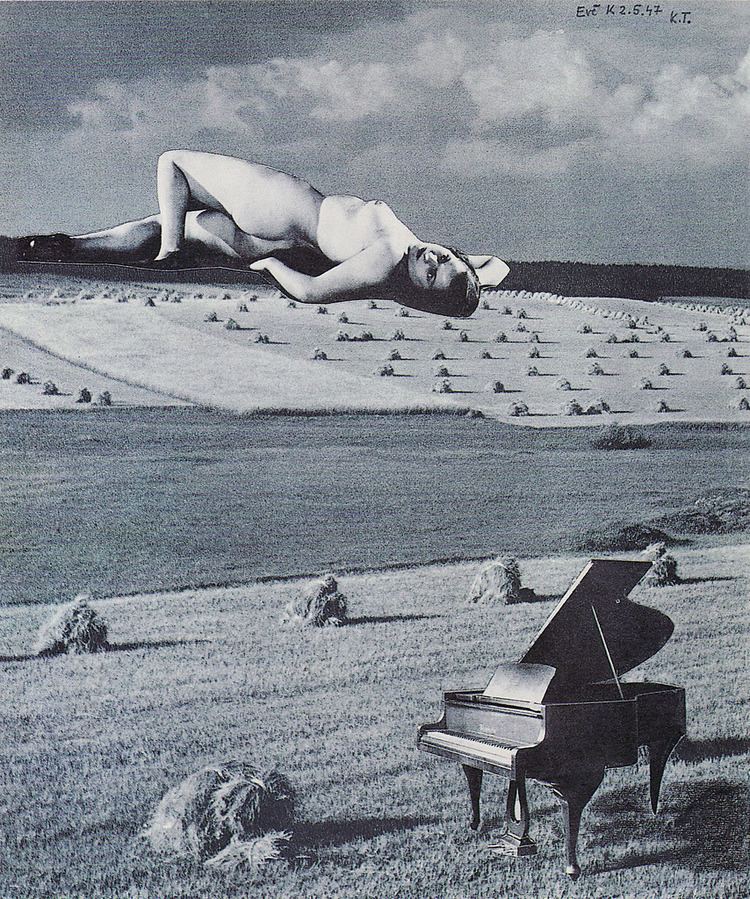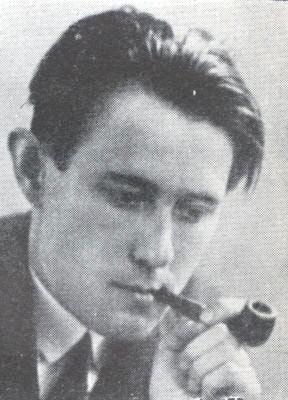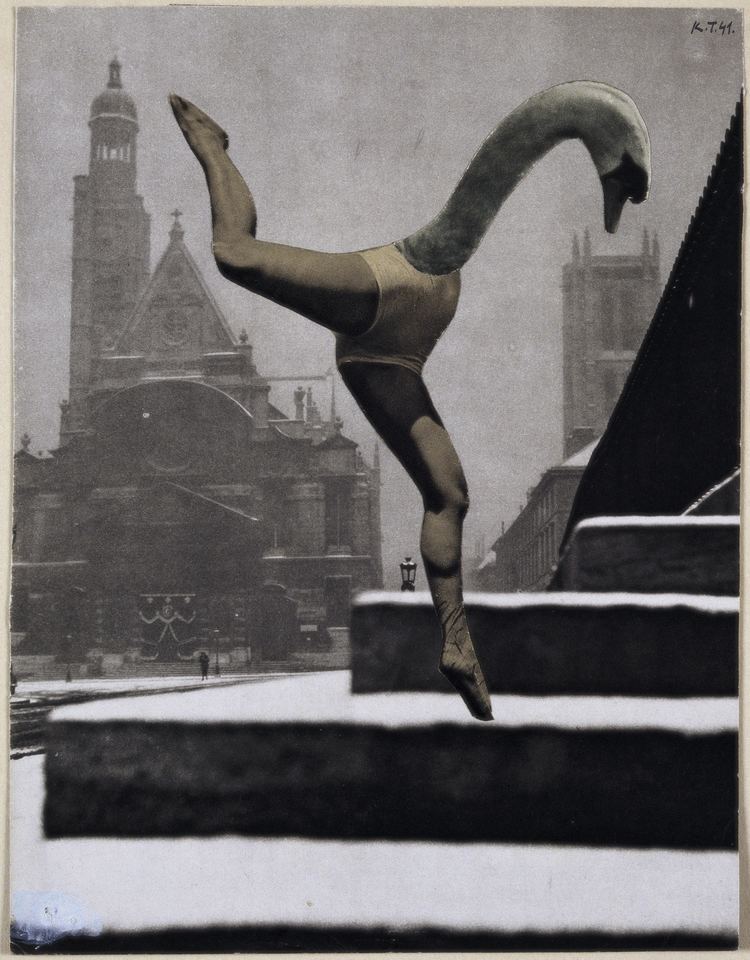Nationality Czech Parents Josef Teige Role Artist | Name Karel Teige Relatives Josef Teige (father) | |
 | ||
Born 13 December 1900Prague, Austria-Hungary ( 1900-12-13 ) Occupation Publicist, literary critic Books Alphabet: Postcard Book, Modern Architecture in Czech, Karel Teige, Osvobozování života a poezie Similar People Jaroslav Seifert, Ladislav Sutnar, John Heartfield Died 1 October 1951 (aged 50) Prague, Czechoslovakia | ||
Abeceda typography book by karel teige
Karel Teige (13 December 1900 in Prague – 1 October 1951 in Prague) was a Czech modernist avant-garde artist, writer, critic and one of the most important figures of the 1920s and 1930s movement. He was a member of the Devětsil (Butterbur) movement in the 1920s and also worked as an editor and graphic designer for Devětsil's monthly magazine ReD (Revue Devětsilu). One of his major works on architecture theory is The Minimum Dwelling (1932).
Contents
- Abeceda typography book by karel teige
- KAREL TEIGE DAS MODERNE LICHTBILD IN DER ECHOSLOVAKEI
- Life and career
- Studies
- Scientific writings
- English Editions
- Secondary literature
- References
KAREL TEIGE : DAS MODERNE LICHTBILD IN DER ČECHOSLOVAKEI.
Life and career

Born in an assimilated German ethnic ancestry family. With evidently endless energy, Teige introduced modern art to Prague. Devětsil-sponsored exhibitions and events brought international avant-garde figures like Le Corbusier, Man Ray, Paul Klee, Vladimir Mayakovsky, and Walter Gropius, among many others, to lecture and perform in Prague. Teige interpreted their work, sometimes literally, for the Czech audience. In his 1935 Prague lecture, André Breton paid tribute to his "perfect intellectual fellowship" with Teige and Nezval: "Constantly interpreted by Teige in the most lively way, made to undergo an all-powerful lyric thrust by Nezval, Surrealism can flatter itself that it has blossomed in Prague as it has in Paris."

Although not an architect, Teige was an articulate and knowledgeable architecture critic, an active participant in CIAM, and friends with Hannes Meyer, the second director of the Bauhaus. From 1929 to 1930 he gave guest lectures at the Bauhaus in Dessau

Teige and Meyer both believed in a scientific, functionalist approach to architecture, grounded in Marxist principles. In 1929 he famously criticized Le Corbusier's Mundaneum project (planned for Geneva but never built) on the grounds that Corbusier had departed from rational functionalism, and was on his way to becoming a mere stylist. Teige believed that 'the only aim and scope of modern architecture is the scientific solution of exact tasks of rational construction.'

After welcoming the Soviet army as liberators, Teige was silenced by the Communist government in 1948. In 1951 he died of a heart attack, said to be a result of a ferocious Soviet press campaign against him as a 'Trotskyite degenerate,' his papers were destroyed by the secret police, and his published work was suppressed for decades.
